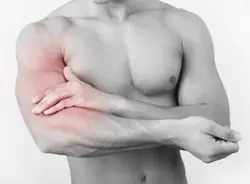According to statistics, more than 25% of all athletes annually receive ruptures or muscle injuries. Therefore, if you are an athlete with a lot of experience behind you, constantly exhausting yourself with intense training, then, unfortunately, you can easily become one of them.
Most often, ruptures of contracted muscles occur, and virtually no injury occurs during the relaxation stage. Usually this - closed damage, which are not reflected in any way on the surface of the skin. However, sometimes there are open injuries – they are easier to diagnose. They are identified and sutured during surgical exploration of the wound. With closed injuries everything is much more serious. They are divided into:
- full,
- incomplete.
These breaks are caused sudden movements or reflex contractions. “Incomplete” include muscle strains, which can be dealt with at home. Although, it is generally accepted that sprains are not a rupture of the entire muscle, but only a few fibers of muscle tissue...
Susceptible to ruptures muscles unprepared for the load received or not warmed up. Although there are also possible options for damage to very tired muscle tissue. Depending on the sport, injuries occur in different areas of the body. It is bobibuilders who most often suffer from ruptures, since this sport involves heavy loads on the entire body. The trapezius, long muscle groups of the back, shoulder girdle, biceps, triceps and even quadriceps muscles of the limbs suffer from training. In fitness, the muscles of the thigh and calf area are more involved.
How is a torn muscle treated?
If damaged more than 25% muscle tissue, then it is simply impossible to do without surgical intervention. Otherwise, complete restoration of muscle function cannot be achieved. It is sutured using the fascia of the thigh. The dura mater is also sometimes used. IN sports traumatology U-shaped sutures are applied to torn tissues with pieces of the materials described above, since, unlike conventional suture materials, they do not injure or cut through entire muscle tissue.
As we have already said, with a complete break you cannot do without operations. It should be done as quickly as possible, since after a few days the muscle may contract strongly, and its length will no longer be long enough for suturing. You will have to resort to additional surgical procedures. For best results, surgery should be performed within the first 72 hours.
After operation splints are applied or a bandage for two to six weeks. Of course, this all depends on the extent of the tear and the type of muscle group damaged. Exercises to restore lost muscle functions are resumed from 3-4 weeks, gradually increasing the intensity of the load. However final restoration realistically only 4-6 months after a successful operation.
Post Views: 162


